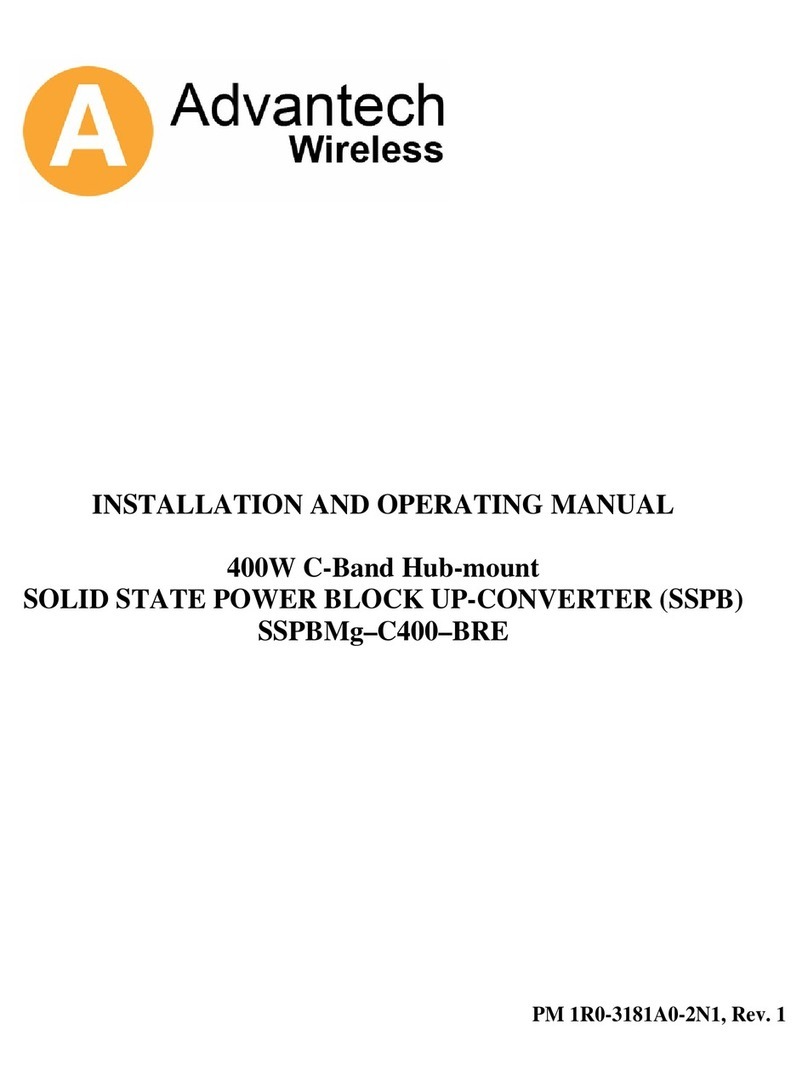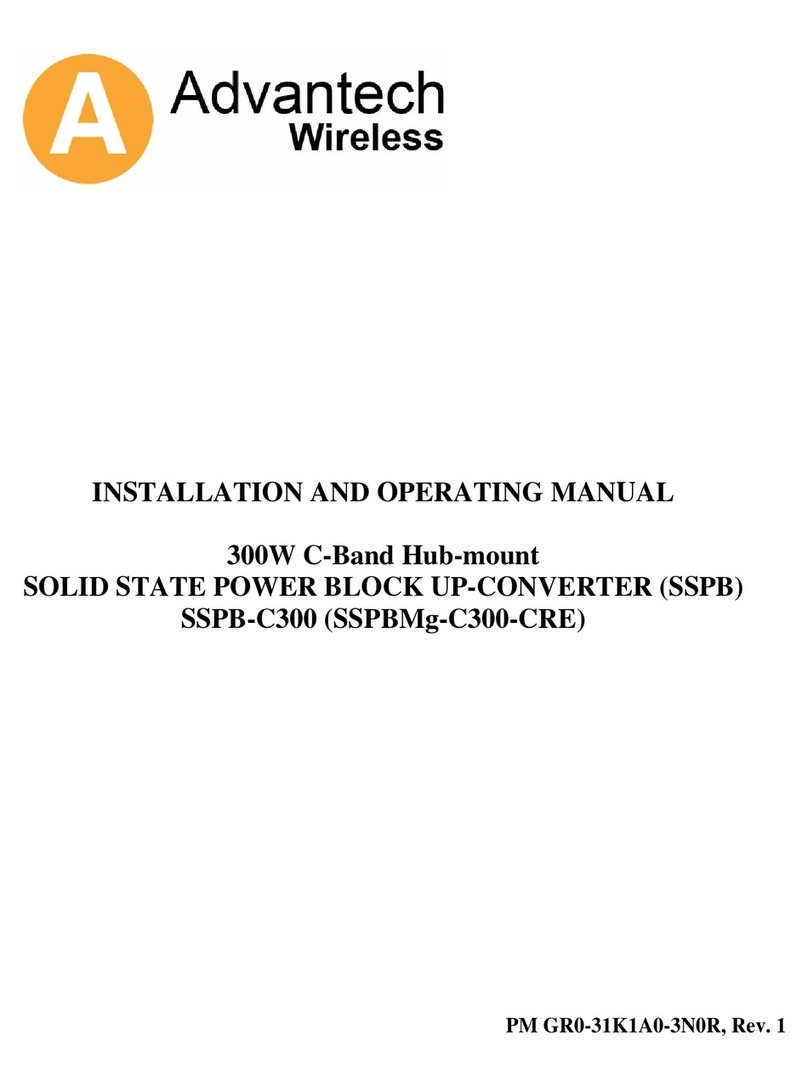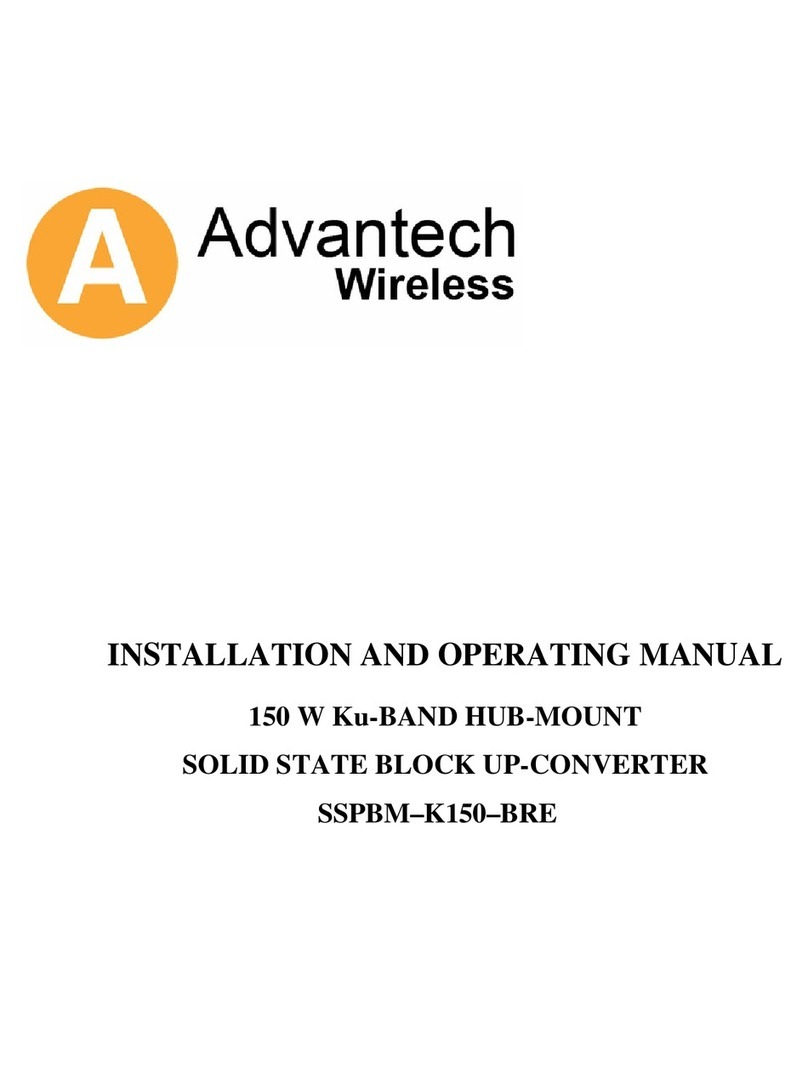
SSPBM-CX100-CSE
2.2.2 UP-CONVERTER ASSEMBLY
The L-Band signal arriving from a modem enters the Up-Converter Assembly through a ‘N-type’
connector, see Figure 3: Connectors (page 15). The L-Band signal (950 MHz to
1825 MHz) enters the high gain Low Noise Amplifier (LNA) and Medium Power Amplifier
(MPA) stages that boost the RF power level sufficient for the transmission through the Up-
Converter Assembly.
Integral to the UP-Converter Assembly is a variable attenuation section that maintains the overall
gain of this module constant against changes in temperature (global temperature compensation).
A temperature dependent DC voltage is sent from a temperature sensor from within the HPA
Assembly through the power conditioner board to the attenuator. The amount of attenuation is
varied with the change in the DC voltage.
The Up-Converter Assembly converts and amplifies the incoming L-Band carrier signal into a C-
Band carrier. To achieve this requirement, this assembly contains a synthesizer, a mixer, a
multiplier, two LNAs and a band-pass filter, see Figure 2: Block Diagram (page 12). For this
application, the Up-Converter requires the L-Band signal, which is sent to the mixer and the 10
MHz reference, which is fed into the synthesizer.
The synthesizer contains a phase-locked loop local oscillator (PLL LO), which is normally
phase-locked with the incoming 10 MHz reference signal. When functioning correctly, the
PLLLO generates a 4.900 GHz LO signal. The 4.900 GHz LO signal and the L-Band signal are
fed into a mixer to produce the required C-Band signal. The frequency-range provided by the
Up-Converter Assembly is from 5.850 GHz to 6.725 GHz.
The synthesizer also contains an out of lock protection circuitry that prevents frequency shifts
from occurring to the resulting C-Band signal. When the oscillator is not phase-locked, a signal
is sent to the power conditioner board within the HPA Assembly to shutdown the RF devices.
The band-pass filter removes the unwanted harmonic frequencies, allowing the C-Band signal to
pass through the HPA Assembly.
Page 9






























